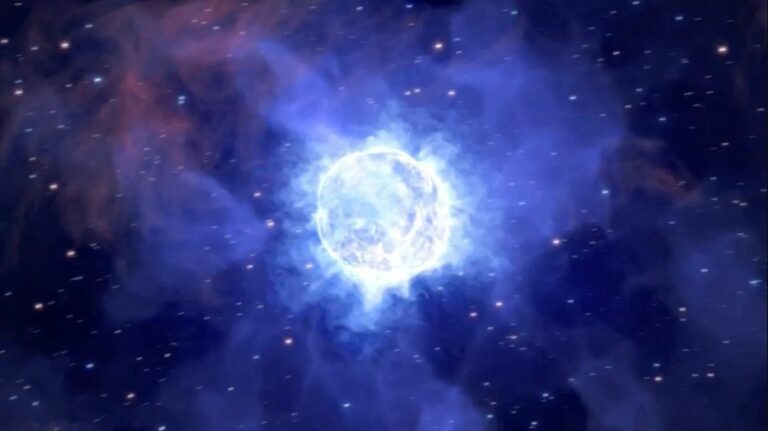Astronomers Left Confused as Enormous Star Disappears Without a Trace
In any event, the Kinsman Dwarf Galaxy, or PHL 293B, is far way, too far for astronomers to directly observe its stars. Their presence can be inferred from spectroscopic signatures — specifically, PHL 293B between 2001 and 2011 consistently featured strong signatures of hydrogen that indicated the presence of a massive “luminous blue variable” (LBV) star about 2.5 times more brilliant than our Sun. Astronomers suspect that some very large stars may spend their final years as LBVs.
Though LBVs are known to experience radical shifts in spectra and brightness, they reliably leave specific traces that help confirm their ongoing presence. In 2019 the hydrogen signatures, and such traces, were gone. Allan says, “It would be highly unusual for such a massive star to disappear without producing a bright supernova explosion.”
The Kinsman Dwarf Galaxy, or PHL 293B, is one of the most metal-poor galaxies known. Explosive, massive, Wolf-Rayet stars are seldom seen in such environments — NASA refers to such stars as those that “live fast, die hard.” Red supergiants are also rare to low Z environments. The now-missing star was looked to as a rare opportunity to observe a massive star’s late stages in such an environment.
In August 2019, the team pointed the four eight-meter telescopes of ESO’s ESPRESSO array simultaneously toward the LBV’s former location: nothing. They also gave the VLT’s X-shooter instrument a shot a few months later: also nothing.
Still pursuing the missing star, the scientists acquired access to older data for comparison to what they already felt they knew. “The ESO Science Archive Facility enabled us to find and use data of the same object obtained in 2002 and 2009,” says Andrea Mehner, an ESO staff member who worked on the study. “The comparison of the 2002 high-resolution UVES spectra with our observations obtained in 2019 with ESO’s newest high-resolution spectrograph ESPRESSO was especially revealing, from both an astronomical and an instrumentation point of view.”
Examination of this data suggested that the LBV may have indeed been winding up to a grand final sometime after 2011.
Team member Jose Groh, also of Trinity College, says “We may have detected one of the most massive stars of the local Universe going gently into the night. Our discovery would not have been made without using the powerful ESO 8-meter telescopes, their unique instrumentation, and the prompt access to those capabilities following the recent agreement of Ireland to join ESO.”
Combining the 2019 data with contemporaneous Hubble Space Telescope (HST) imagery leaves the authors of the reports with the sense that “the LBV was in an eruptive state at least between 2001 and 2011, which then ended, and may have been followed by a collapse into a massive BH without the production of an SN. This scenario is consistent with the available HST and ground-based photometry.”
A star collapsing into a black hole without a supernova would be a rare event, and that argues against the idea. The paper also notes that we may simply have missed the star’s supernova during the eight-year observation gap.
LBVs are known to be highly unstable, so the star dropping to a state of less luminosity or producing a dust cover would be much more in the realm of expected behavior.
Says the paper: “A combination of a slightly reduced luminosity and a thick dusty shell could result in the star being obscured. While the lack of variability between the 2009 and 2019 near-infrared continuum from our X-shooter spectra eliminates the possibility of formation of hot dust (⪆1500 K), mid-infrared observations are necessary to rule out a slowly expanding cooler dust shell.”
The authors of the report are pretty confident the star experienced a dramatic eruption after 2011. Beyond that, though:
“Based on our observations and models, we suggest that PHL 293B hosted an LBV with an eruption that ended sometime after 2011. This could have been followed by
(1) a surviving star or
(2) a collapse of the LBV to a BH [black hole] without the production of a bright SN, but possibly with a weak transient.”
Source: BigThink
Do not forget to share your opinion with us to provide you with the best posts !




0 Comments